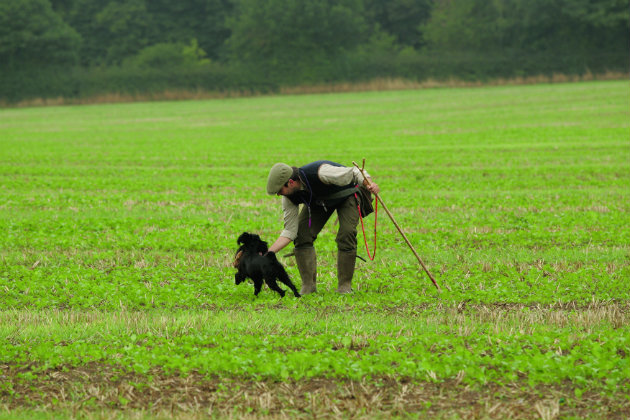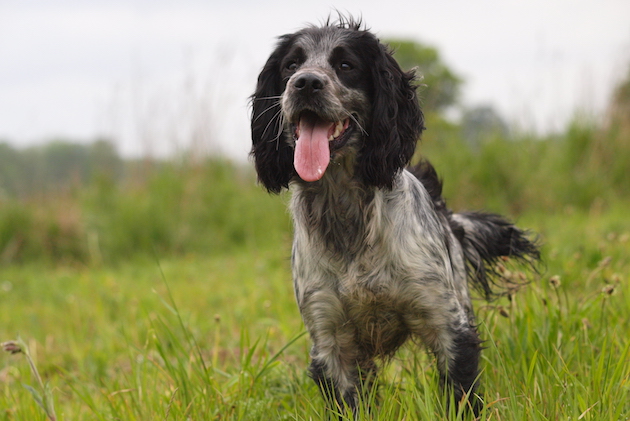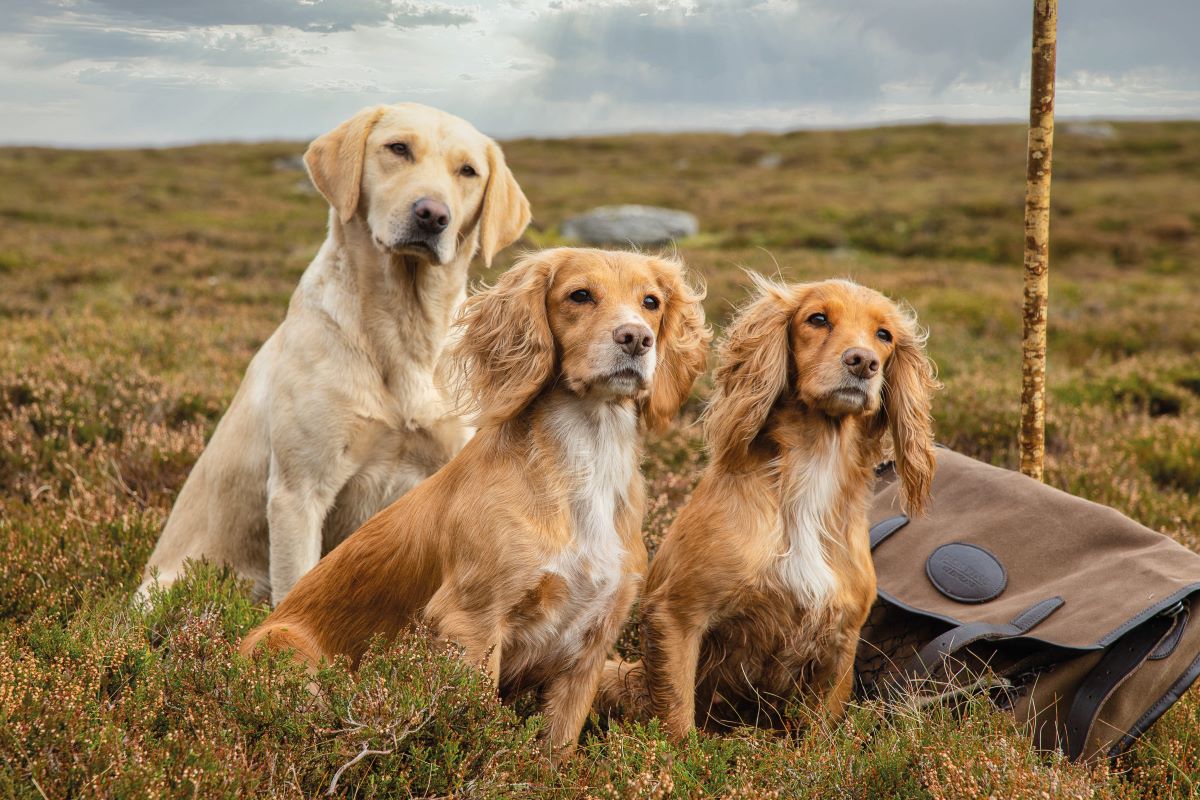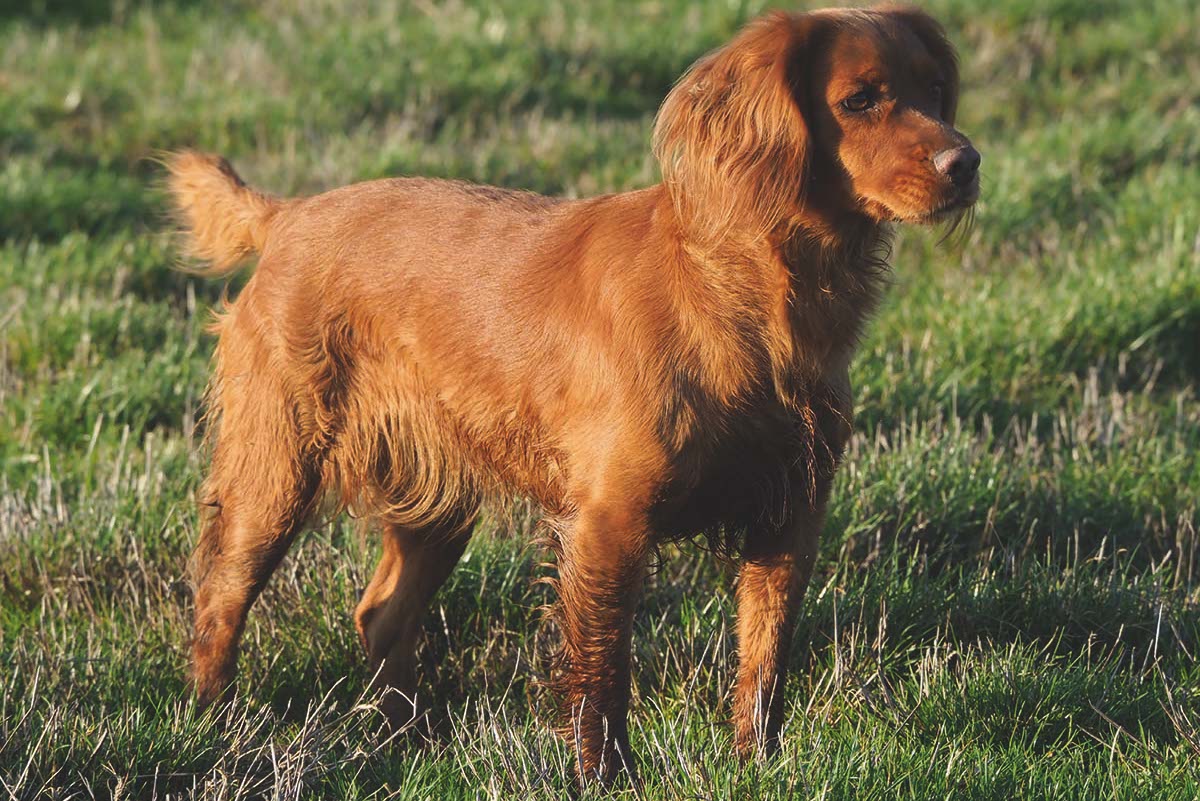Now sprockers, springadors and even cockerpoos can try for a Working Gundog Certificate
Allowing cross-breeds to take part in Working Gundog Certificate events is a major step in the right direction, says David Tomlinson

A sprocker in the field
For many years the Kennel Club has operated a form of canine apartheid. Only dogs that are pure-bred and registered with the Club are allowed to enter field trials.
Working Gundog Certificate open to sprockers
You may own the most talented sprocker or springador, but there’s no way that you can prove its ability by competing with it in a field trial. However, after discussion by the field trials committee, it has recently been agreed by the Kennel Club that unregistered pedigree dogs and cross-breeds can now take part in Working Gundog Certificate (WGC) events.
This represents a slight but significant chink in the Kennel Club’s canine apartheid, a recognition that there are a lot of cross-bred gundogs working today and that many of them are just as competent as those gundogs that are both pure-bred and registered.
There is, of course, a price to pay for this. For a dog to be allowed to qualify for a WGC, it must be registered on the Kennel Club’s activity register. The register has long existed to allow cross-breeds to take part in activities like agility and heelwork to music, so this move is a sensible extension.
The price is a relatively modest £15. As you would expect, there are a number of rules about the names of dogs that go on the activity register. Single-word names aren’t allowed and nor can you use your surname, while there is a limit of 24 letters. The Kennel Club also retains the right to refuse names it considers inappropriate or offensive, which is fair enough.
The WGC has been around for 17 years. I remember going to one of the very first events and I even appraised dogs on one of the early days. (I was never asked to do so again.) I have always liked the idea of the WGC, which in the Kennel Club’s words “is to provide credible proof that the handler and dog are a competent partnership, with the qualities to fulfil the general requirements of work on a shoot”.
There are several ways a dog can qualify for a WGC. In my view, by far the best test of a dog and handler partnership is seeing the two working on a proper shoot and this is one of the options. On a shoot, assessors have to observe the participants throughout the day as they work their dogs.
No artificial situations will be devised and the dogs won’t be asked to carry out specific retrieves. Dog and handler simply have to get on with their job as they would on a normal day.
A second option is a dedicated WGC day for dogs that retrieve, using dummies. In many ways, this is more exacting as handlers and dogs have to walk together to the start area with the dogs off lead and under control, before taking part in a simulated drive, with dogs assessed both in the beating line and waiting at pegs.
Overall ability
They will then be expected to hunt for both seen and unseen dummies after the drive. They will also be expected to perform a marked retrieve from water and there’s a steadiness exercise where dogs are left together while handlers collect up dummies. Though the dummy- day tests a dog’s overall ability, it takes the excitement of live game out of the examination.
There are also WGC days for pointing dogs, including setters, pointers and HPRs. These dogs are assessed on their ability to hunt and point, as well as their steadiness. To gain its certificate a dog should hunt the ground in a regular pattern, point live game, flush on command and be steady to both birds and shot. It’s also possible for pointers to be assessed on their retrieving ability.
Lastly, there’s the third option, which is assessing dogs at a gundog test (not one specifically run for WGC dogs). This will usually be based on the tests being held on the day.
The assessors on a WGC day are either Kennel Club field trial judges or anyone with knowledge and experience of working gundogs who has assessed the certificate three times and has been approved by another qualified assessor.
This means that a shoot captain or head picker-up, for example, can qualify as an assessor. A single assessor can observe up to three handlers and dogs, but if there are more, then two are required.
Wilson Young, chairman of the Kennel Club’s field trials committee, hopes that this latest move will encourage more owners to try for their dog’s WGC. I suspect the fact that sprockers, springadors, perhaps even cockerpoos, can try for a WGC will give it the boost it needs, as currently only small numbers of dogs and handlers try for it.
Give it a go
If you are interested in having a go, contact the Kennel Club field trials team for more information. Telephone 020 7518 1059 between 9am and 5pm Monday to Friday, or email gundogs@thekennelclub.org.uk.
Gundog trainers, clubs or even individuals can apply for permission to run an assessment, so it should be possible to set up a day on your own ground or shoot if you want to. More details can be found in the WGC Handbook, which is available free from the Kennel Club.










